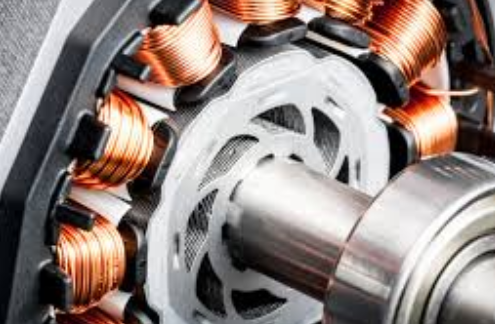If you’re learning motion control technology or need to choose the right DC motor for your project, you would want to understand the difference between brushed DC motors and their brushless counterparts.
There was a time brushed motors were the norm of the day, but in recent times they’ve been fast replaced by brushless motors, which are known to be more precise and efficient. Here is a quick lowdown to help you learn more about brushless DC motors and how they differ from brush motors.
What is a brushless DC electric motor?
A DC (direct current) motor is a machine that changes DC electricity into motion. DC motors come in various sizes and are used widely across industries. Conventional (brushed) DC motors are simple motors that have been in use since the 1800s.
Their new-age counterpart, a brushless DC motor also runs on DC electricity to convert power into mechanized motion. The power is provided by either regular electricity or an inverter that produces AC electricity to run different phases of the motor using a controller. Brushless DC motors (BLDC motors) are also commonly known as synchronous DC motors and electronically commutated (EC) motors.
How is a BLDC motor different from a brushed motor?
While a BLDC motor runs on the same basic principle as a brushed motor, the important difference is that a brushless motor is controlled by a computer while a conventional motor is controlled by mechanical carbon brushes.
Jerry Boatman from AssunMotor.com explains that motors controlled by computers are more accurate than motors controlled by mechanical brushes. In addition, brushless motors have lower shaft friction and inertia and offer a higher torque-to-weight ratio. They are also more compact than brush DC motors.
Where are brushless DC motors used?
BLDCs are ideal for use in small-sized devices such as power tools, mechanical arms, injection machines, medical equipment, robotics, automation systems and safety systems. A brushless electric motor is a good choice for compact portable devices as it works noise-free, provides ideal loading speeds, and requires virtually no maintenance.
What are the advantages of using a brushless motor?
First and foremost, computer-controlled motors are invariably more accurate than brush motors. They enable precise motion positioning using high-tech sensors to calculate position. In addition, they are equipped to maintain different levels of torque with respect to changing speeds, which enables superior performance over brushed motors.
The absence of brushes in a BLDC motor eliminates the need for cleaning or replacing brushes over repeated use. Moreover, quality BL motors can last for up to 10,000 hours and still provide high-level performance.
Another important advantage of BLDC motors is that as there are no brushes, there is no loss of electrical power leading to greater productivity and cost savings. Because of high-level precision offered by brushless motors, they are an economical and reliable solution for smaller applications.
Which motor is right for your project?
If you need an inexpensive and simple motor, go for a brushed DC motor. If your project needs a high-performing, more accurate and low-maintenance motor, choose a brushless motor.


